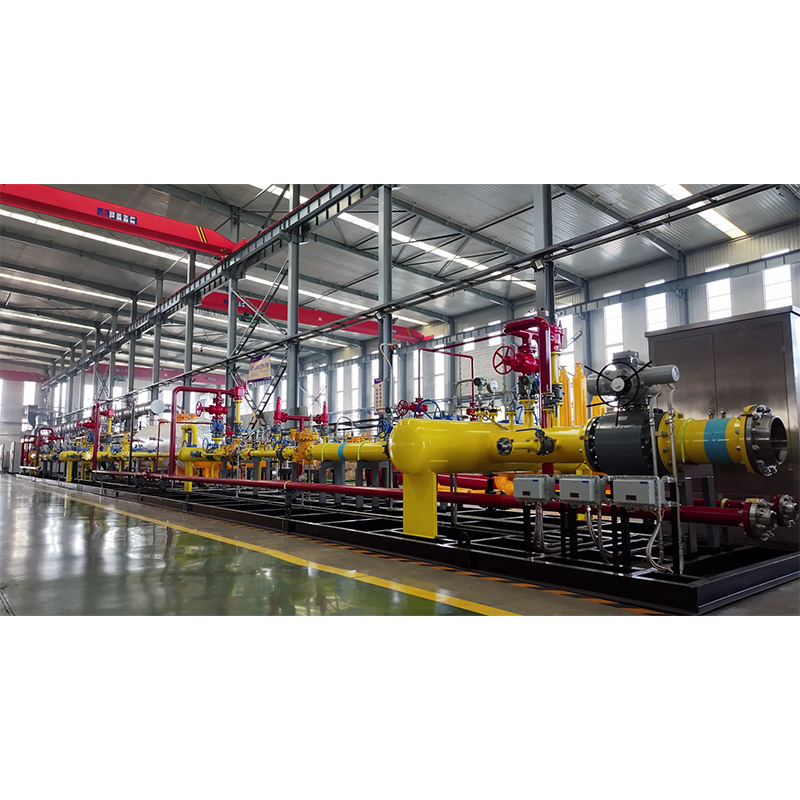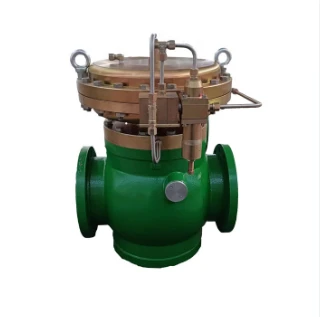
Jun . 05, 2025 06:56
Back to list
Natural Gas Pressure Reducing Station - Safe & Efficient Control
- The Critical Role of Gas Pressure Management in Modern Infrastructure
- Core Functionality of Pressure Regulation Systems
- Technical Advantages Driving System Performance
- Industry-Leading Solutions Comparison
- Customized Engineering for Project-Specific Requirements
- Operational Success Stories Across Industries
- Ensuring Reliability in Natural Gas Pressure Reducing Stations

(natural gas pressure reducing station)
The Critical Role of Natural Gas Pressure Reducing Stations in Infrastructure
Critical infrastructure across energy networks relies on specialized facilities maintaining optimal gas pressure levels. Pressure reducing installations form engineering backbones between transmission pipelines reaching 150+ PSI and local distribution networks requiring sub-5 PSI outputs. Industry statistics reveal that properly configured pressure management systems prevent approximately 17% of pipeline integrity incidents according to the American Gas Association. These facilities contain multifaceted components - including primary pressure reducing valves, emergency shut-off systems, filtration units, and telemetry controls - working collectively to ensure consistent supply stability. When upstream pressures fluctuate during peak demand periods, regulating stations perform continuous adjustments to maintain downstream safety parameters within 0.5% variance thresholds.
Core Functionality of Pressure Regulation Systems
Station architecture incorporates three operational segments working in sequence. The initial filtration module removes particulates averaging 5 microns or larger, protecting sensitive downstream components. Fuel conditioning then occurs in pressure reduction trains where high-pressure flow encounters specialized valves that expand gas volumes while reducing kinetic energy. Industry-standard configurations feature parallel valve trains with 100% redundancy; if primary valves become unresponsive during pressure surges exceeding 30 PSI/minute ramp rates, secondary systems instantaneously engage. Final monitoring compartments contain flow computers validating operational parameters every 500 milliseconds against preset safety protocols. This layered methodology achieves pressure transition ratios up to 50:1 while meeting ASME B31.8 safety standards for municipal distribution networks.
Technical Advantages Driving System Performance
Modern facilities integrate patented technologies surpassing legacy installations. Pilot-operated valves with digital positioners maintain pressure differentials within ±0.25 PSI accuracy despite variable consumption patterns. Unlike older mechanical systems requiring quarterly calibration, self-diagnosing actuators perform continuous performance validation through built-in HART protocol sensors. Corrosion-resistant nickel alloys in valve trim assemblies withstand 600+ PSI impact forces while sustaining operation for 250,000+ cycles between maintenance intervals. Critical monitoring subsystems feature triple-redundant pressure transmitters capable of detecting anomalies at 0.05 PSI resolution thresholds. Facilities equipped with dynamic flow modeling software can autonomously predict demand shifts using 60-day weather pattern analysis, automatically adjusting regulator responses to prevent underpressure events.
Industry-Leading Solutions Comparison
| Manufacturer | Max Pressure (PSI) | Flow Accuracy | Response Time | Certifications |
|---|---|---|---|---|
| Emerson RG Series | 750 | ±0.15% | 15ms | ATEX, SIL 3 |
| Kimray G5 System | 600 | ±0.25% | 25ms | ISO 9001, PED |
| Fisher 99H Regulators | 1,440 | ±0.12% | 8ms | ASME B16.34, CRN |
| Rotork PakScan P3 | 1,000 | ±0.18% | 10ms | IEC 61508, CSA |
When evaluating gas pressure reducing valve technologies, Fisher's high-velocity units demonstrate particular dominance in extreme pressure scenarios common within LNG transfer terminals. Their proprietary balanced-seat design maintains stability during 0-300 PSI transient events that typically cause conventional valves to oscillate. However, Emerson's integrated pressure reducing stations provide superior total cost efficiency for municipal applications requiring compliance with Part 192.631 regulatory standards for remote monitoring capabilities.
Customized Engineering for Project-Specific Requirements
Commercial installations require tailored engineering approaches. Urban distribution projects typically implement parallel filter-separator configurations with cyclone technology removing 99.98% of 5-micron particulates prior to pressure regulation. For arctic installations where temperatures drop below -60°F, specialized diaphragm materials resist brittleness while heated enclosures maintain valve responsiveness. Industrial cogeneration plants demanding 100,000 SCFM+ flow rates incorporate oversized trim packages minimizing turbulence noise below 65 dBA at 25-meter distances. One recent liquified natural gas transfer terminal project incorporated five-stage pressure reduction sequences with intermediate temperature correction systems, achieving pressure reduction from 1,200 to 25 PSI across just 8 linear meters while maintaining -160°C cryogenic specifications.
Operational Success Stories Across Industries
Regional gas utilities have documented measurable improvements from station upgrades. Central Valley Gas Cooperative reported 17% reduction in unplanned outages after installing modern pressure reducing stations featuring pilot-operated regulators with integrated SCADA communications. A midstream operator in the Bakken formation eliminated compressor shutdowns during demand surges by implementing parallel redundancy, processing 78 million cubic feet daily while maintaining pressure within 0.3% of setpoint. Following the installation of a custom-configured natural gas pressure reducing valve system, a Texas-based LNG export terminal achieved constant vaporization pressure despite fluctuating marine vessel demands, increasing daily transfer volumes by 22% while operating within API 14C safety instrumented system requirements.
Ensuring Reliability in Natural Gas Pressure Reducing Stations
Continuous operational integrity requires implementing rigorous maintenance protocols alongside intelligent monitoring. Industry best practices dictate quarterly internal inspections using borescopes to evaluate diaphragm integrity, with preventative replacements recommended after 10,000 operating cycles. Remote telemetry systems should report valve position data every 15 seconds, comparing actual versus commanded positions to detect response lag. Facilities processing treated gas should conduct particulate analysis every 6 months, confirming filter effectiveness remains above 95% capture efficiency for 5-micron particulates. When selecting natural gas pressure reducing station
components, specify valves exceeding project requirements by 15% to accommodate unforeseen demand growth. Properly engineered installations routinely achieve 30+ year service lives with 99.996% availability – translating to less than 3 hours of unplanned downtime annually.

(natural gas pressure reducing station)
FAQS on natural gas pressure reducing station
Q: What is a natural gas pressure reducing station?
A: It is a facility that lowers high-pressure natural gas from transmission lines to safe distribution levels. This ensures efficient delivery to homes and businesses. Key components include valves and control systems.
Q: How does a gas pressure reducing station operate?
A: The station uses pressure reducing valves to automatically control gas flow and pressure. It monitors input to provide consistent output for end-use applications. This process prevents over-pressurization and enhances system reliability.
Q: What is the function of a natural gas pressure reducing valve?
A: This valve automatically reduces high-pressure gas to a preset lower pressure for safe consumption. It protects downstream pipelines and appliances from damage. Regular calibration ensures accurate performance.
Q: Why are safety features crucial in pressure reducing stations?
A: Safety devices like shut-off valves prevent leaks during pressure surges. They ensure compliance with industry standards to avoid accidents. Routine inspections maintain these protections for long-term safety.
Q: What maintenance is needed for gas pressure reducing valves?
A: Valves require periodic checks for wear and tear to avoid failures. Cleaning and testing ensure optimal function under varying conditions. Proactive maintenance extends lifespan and reduces operational risks.
Latest news
-
What Role Do Pressure Reducers Play in Industrial Systems?NewsJun.12,2025
-
What Role Do Gas Valves Play in Industrial Safety and Functionality?NewsJun.12,2025
-
Key Components in Energy Management and Temperature ControlNewsJun.12,2025
-
Integral Components in Mechanical and Energy SystemsNewsJun.12,2025
-
How Do Industrial Valves and Filters Ensure System Safety and Efficiency?NewsJun.12,2025
-
Essential Components for Industrial Fluid Management: Valves and SystemsNewsJun.12,2025

